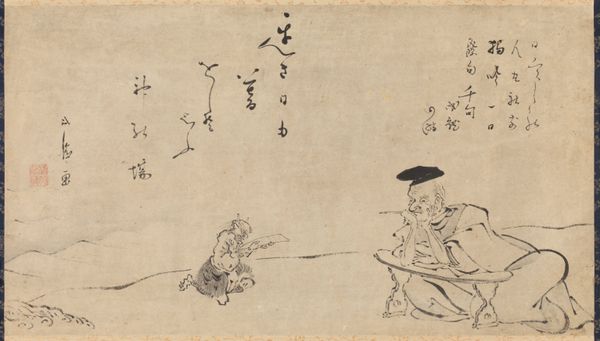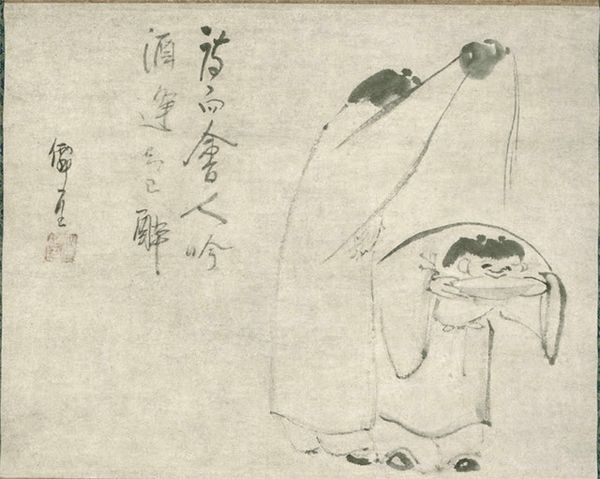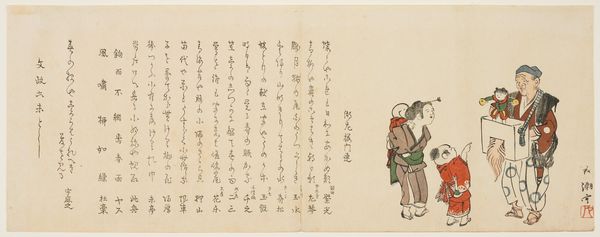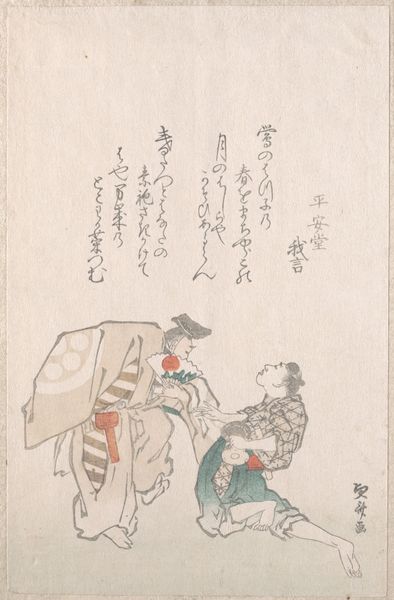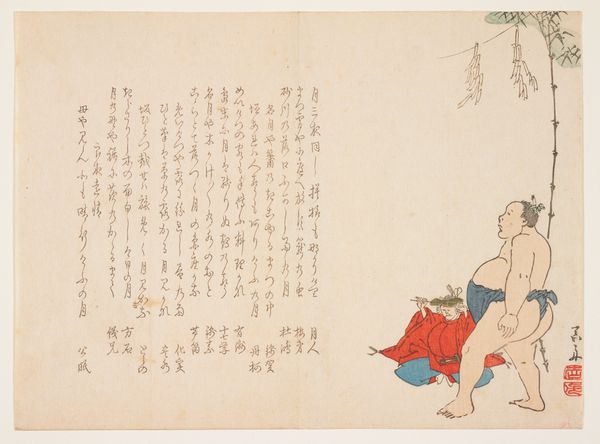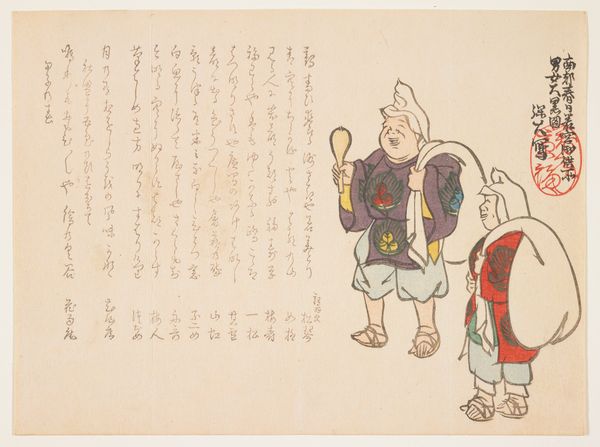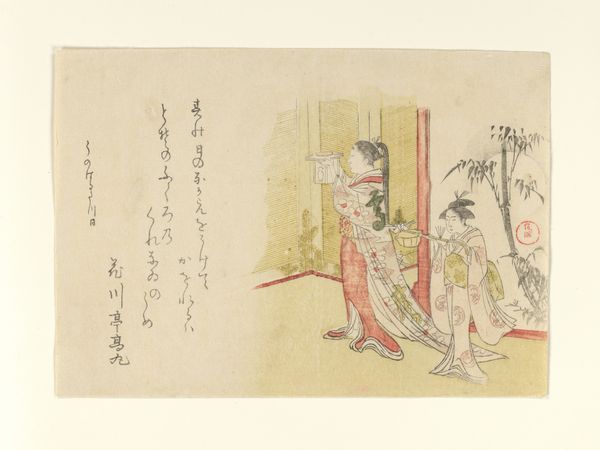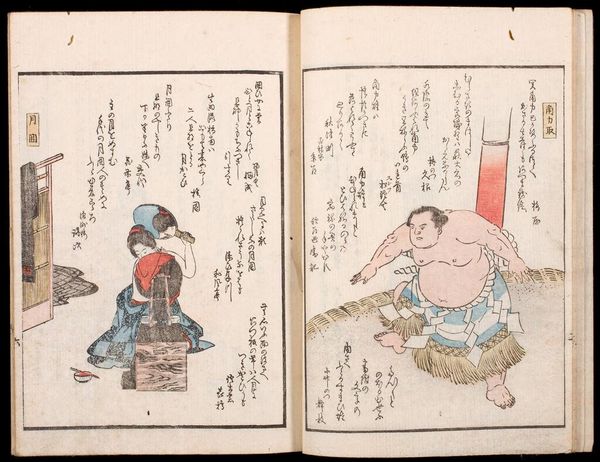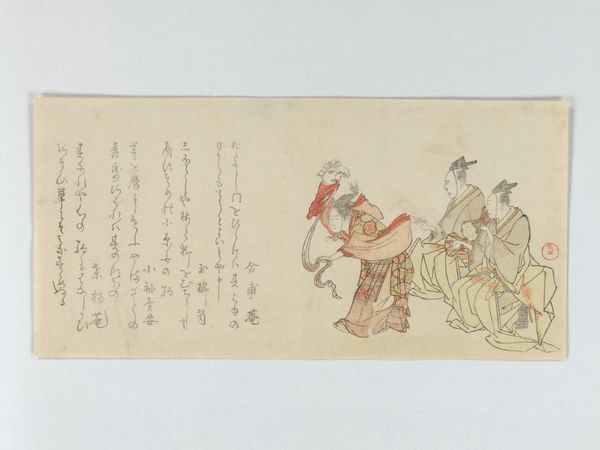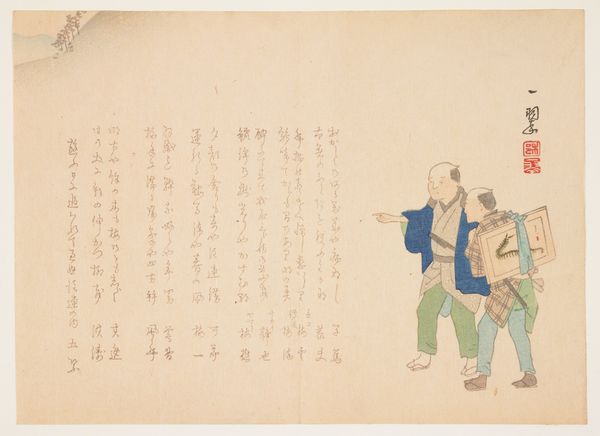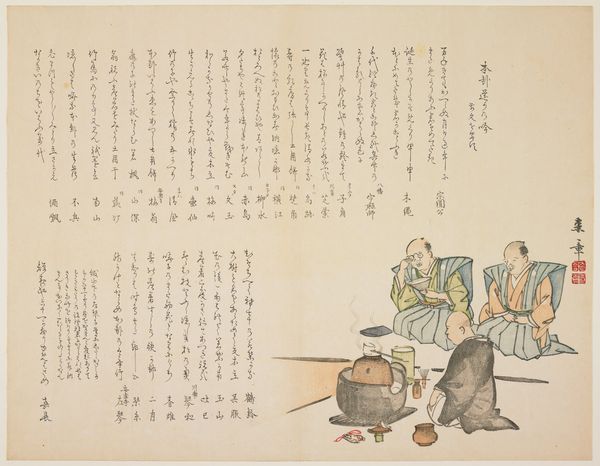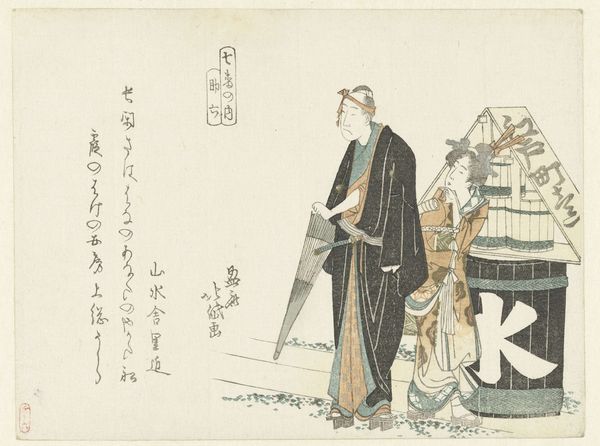
drawing, ink
#
drawing
#
narrative-art
#
impressionism
#
asian-art
#
landscape
#
ukiyo-e
#
figuration
#
ink
#
genre-painting
Copyright: Public domain
Editor: So, this piece is "Narrow Road to the Deep North" by Yosa Buson. It appears to be an ink drawing. It has a sort of whimsical feel, almost like a quick sketch, but it tells a story. What are your thoughts on this piece? Curator: Well, it’s important to recognize Buson's work within the context of the Edo period and the flourishing of *ukiyo-e* art. Consider how the narrative connects with popular travel literature and the burgeoning merchant class interested in exploring their own nation. What sort of public spaces were pieces like this circulated in at the time? Editor: I suppose it would depend if this was a print, something more accessible, rather than a unique drawing. It's interesting to think about how it might reach a broader audience, not just the elite. Curator: Precisely. Think about the social function of depicting these everyday travelers. Are they romanticized figures, or something else? Is the poem, the text beside the figures, perhaps giving us another layer to consider, by situating their journey in history or the culture of the moment? How might this relate to the government's policies and views on travel? Editor: I never thought about it that way. The political dimension is fascinating! Seeing the figures as something beyond just travelers but a reflection of society makes me look at the art differently. Curator: Exactly! Art doesn't exist in a vacuum. Looking at "Narrow Road to the Deep North" this way invites a much richer, deeper understanding. Editor: This discussion made me appreciate that the movement of these common people also signifies the journey of cultural exchange and the development of a shared cultural consciousness in society. Curator: I'm glad to see you understand how social context can affect not just reception of a work, but also its inherent meaning.
Comments
No comments
Be the first to comment and join the conversation on the ultimate creative platform.
